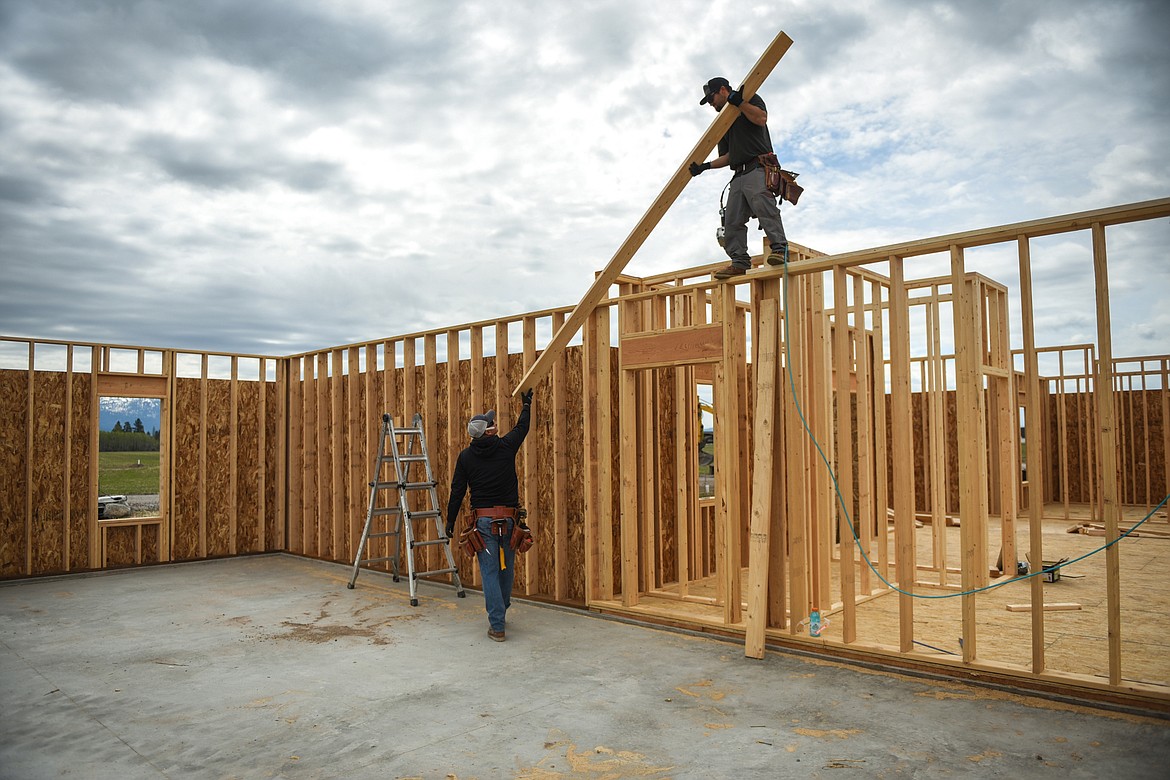Housing crisis hamstrings economic growth in Montana
The lack of housing in Montana is stifling economic development because potential employees can’t find places to live, so even businesses that offer high salaries and want to expand can’t grow.
That’s according to a couple of panelists who presented this week as part of a housing affordability panel to the Local Government Committee of the Montana Legislature.
“This has been a growing issue for years and decades in the state, and it’s clearly boiling over at this point,” said Andrea Davis, executive director of Homeword, which creates and preserves homes in the state and teaches homebuyer education.
Davis, one of the panelists, offered one example she had just come across at a meeting in Kalispell. She said Applied Industrial Technologies, a significant employer in the Flathead, could hire 200 workers tomorrow at salaries of $60,000 to $130,000, but there are no homes for them to move into.
At the meeting, the three presenters, Davis of Missoula, David Fine of Bozeman, and Jesse Jaeger of Missoula, offered perspectives on the housing market from their different vantage points. They also shared possible solutions for lawmakers to consider going into the 2023 legislative session.
“We must prevent Bozeman and Montana from merely becoming a playground for the wealthy,” Fine said.
The median sales price of a home in Bozeman is skyrocketing. (Provided by the Bozeman Real Estate Group for the Daily Montanan.)
In Bozeman, the median sales price of a single family is fast approaching $1 million. Fine, program manager for six of Bozeman’s urban renewal districts, said the median cost of a single family residence is $812,000, or $112,000 more than it was in October of 2021, and police officers, firefighters, construction workers and nurses can no longer afford to live in the city.
He also said businesses cannot attract and retain talent. Six years ago, a family of four earning $80,000, or 117 percent of the area median income, could afford a single family home in Bozeman, he said; in 2021, the same family would need to earn $162,000, or 219 percent of area median income, the equivalent of three salaries of $55,000 each.
“A housing market increasing this rapidly is simply unsustainable,” Fine said.
The city has been using the tools that are available to it, he said, namely tax increment financing, and previously inclusionary zoning, the latter which generally allows local governments to require projects to provide some affordable units. Under inclusionary zoning, Fine said 19 affordable homes were built in Bozeman and occupied by local families, but House Bill 259, a bill the Legislature passed and governor signed in 2021, derailed 60 more units.
“As a result, Bozeman residents lost the opportunity to move into one of these 60 affordable units because the primary tool we had was removed from our toolbox,” Fine said.
In public comment, however, the Montana Building Industry Association’s Abigail St. Lawrence said those 60 units were actually stuck in the approval process in Bozeman. She also said inclusionary zoning has been shown time and again to force the burden of a society-wide issue onto one industry, but developers can’t solve the housing crisis alone.
St. Lawrence said developers do want to build at all income levels, but citing a story in the Bozeman Chronicle, she noted that some longtime residents who are most vocal about housing problems also “bristle” at new development. She said the population in Montana jumped 10 percent in the last decade, and housing grew 7 percent, so the scarcity shouldn’t be a surprise.
“We fundamentally have a supply issue in this state,” St. Lawrence said.
Jaeger, with the Poverello Center shelter in Missoula, said 558 individuals and families are living without a house in Missoula. In fact, he said the number of people at the Pov who are experiencing homelessness for the first time is at an all time high. (The Pov could not be reached Friday by a voicemail for its director for data on the trend.)
“These individuals come to us and are really afraid,” Jaeger said.
He also said people who stay at the Pov do work, contrary to a common misconception. In fact, he said 40 percent of shelter guests have income but still can’t find housing because of the high costs. Additionally, he said housing vouchers aren’t keeping up with rental costs.
“There’s just not enough shelter for everyone who doesn’t have a home,” Jaeger said.
The panelists also talked about solutions. In Bozeman, Fine said the city is looking at streamlining reviews for projects of lower and moderately priced homes, and he said the state should allow for combined planning and zoning hearings to reduce costs by saving time.
“This would decrease approval times by several weeks,” Fine said.
Davis, with Homeword, said resources that leverage other public and private dollars are helpful. In 2019, she said a bill that allowed $15 million of coal trust fund money to be loaned for housing was spent almost immediately and leveraged another $18 million for seven projects in Montana, and she’s hoping it can be renewed.
Davis also said a workforce housing tax credits bill the Montana Legislature passed this last session, House Bill 397, was vetoed by Gov. Greg Gianforte because it was tied to a federal allocation. She believes the bill can be easily fixed for a pilot program in the future.
Jaeger, with the Poverello Center, suggested an expansion to Montana’s Medicaid waiver to allow places like the Pov to recoup costs for housing services. He also said people who used to be incarcerated and need housing would benefit from housing risk pools so they aren’t “permanently punished” from accessing housing.


